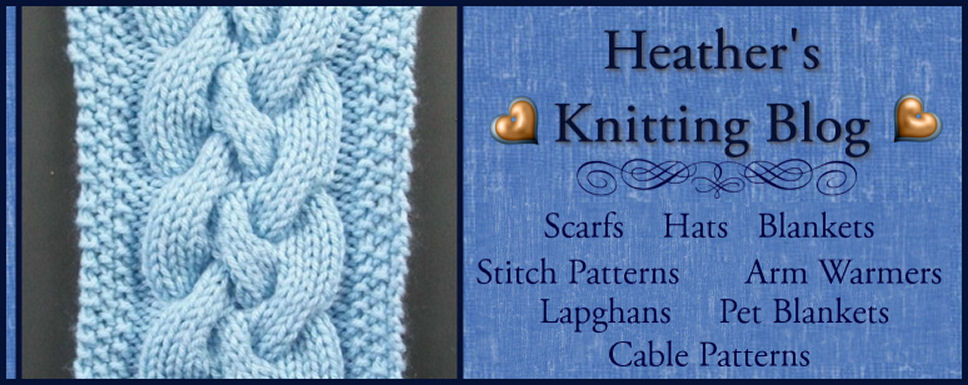Wavy Braid Knit Arm Warmer
Knit Video: Wavy Braid Video here
A beginner can do cables it's not just for the advanced. As soon as I learned how to do the knit and purl stitches I started with cables. Practice makes perfect. Don't get frustrated if it doesn't work out the first time. I had to experiment with cable needles to see which ones worked best. I use the blue yarn needles that are sold at stores like Hobby Lobby and Walmart. Not the small ones but the large ones. I use them because #1 They are plastic. The metal ones are to slick. The stitches will fall right off. #2 They don't sell straight cable needles. #3 I can't use the winged type or the hook styled needles.
UNDERSIDE
You can see a better picture of the cable at the end of this post. I also posted it so you can see the surrounding stitches. I use a slip stitch that makes the underside. It's like elastic meaning that you can can take it on and off without stretching it out. Your arm warmer will stay put but be comfortable at the same time.
- Skill Level: Experienced Beginner
- Uses the cable needle 3 times in 20 rows
- Made Flat, sewn up
ABBREVIATIONS:
4RC = Slip 2 stitches and hold in the back. Knit 2 stitches from your knitting needle, then knit 2 from the cable needle.
6RC = Slip 3 stitches and hold in the back. Knit 3 stitches from your knitting needle and 3 from your cable needle.
4LC = Slip 2 stitches and hold in the front. Knit 2 stitches from your knitting needle and 2 from your cable needle.
6LC = Slip 3 stitches and hold in the front, Knit 3 stitches from your knitting needle and 3 from your cable needle
Chain: 26
Needle Size: 10.5
Size of Arm Warmer
Gauge
Amount of Yarn: 60-70 yards per set
6LC = Slip 3 stitches and hold in the front, Knit 3 stitches from your knitting needle and 3 from your cable needle
Chain: 26
Needle Size: 10.5
Size of Arm Warmer
Gauge
Amount of Yarn: 60-70 yards per set
Row 1, 3: P1([WYIB S1, P1)x3, P5, K6, P2 (WYIB S1, P1)x3
Row 2, 4: P6, K2, P6, K5, P7
Row 5: P1([WYIB S1, P1)x3, P5, K2, 4RC, P2 (WYIB S1, P1)x3
Row 6: P6, K2, P6, K5, P7
Row 7: P1([WYIB S1, P1)x3 P5, K6, P2, (WYIB S1, P1)x3
Row 8: P6, K2, P6, K5, P7
Row 9: P1([WYIB S1, P1)x3, P2, 6RC, P5, (WYIB S1, P1)x3
Row 10: P6, K5 ,P6, K2, P7
Row 11: P1 ([WYIB S1, P1)x3, P2, K6, P5, (WYIB S1, P1)x3
Row 12: P6, K5 ,P6, K2, P7
Row 13: P1([WYIB S1, P1)x3, P2, K2, 4LC, P5, (WYIB S1, P1)x3
Row 14: P6, K5, P6, K2, P7
Row 15: P1([WYIB S1, P1)x3 , P2, K6, P5, (WYIB S1, P1)x3
Row 16: P6, K5, P6, K2, P7
Row 17: P1([WYIB S1, P1)x3, P5, 6LC, P2, (WYIB S1, P1)x3.
Row 18: P6, K5, P6, K3, P7
Row 19: P1([WYIB S1, P1)x3 P5, K6, P2, (WYIB S1, P1)x3
Repeat rows 5-20
I completed rows 1-20 then 5-20. You can continue on as needed

